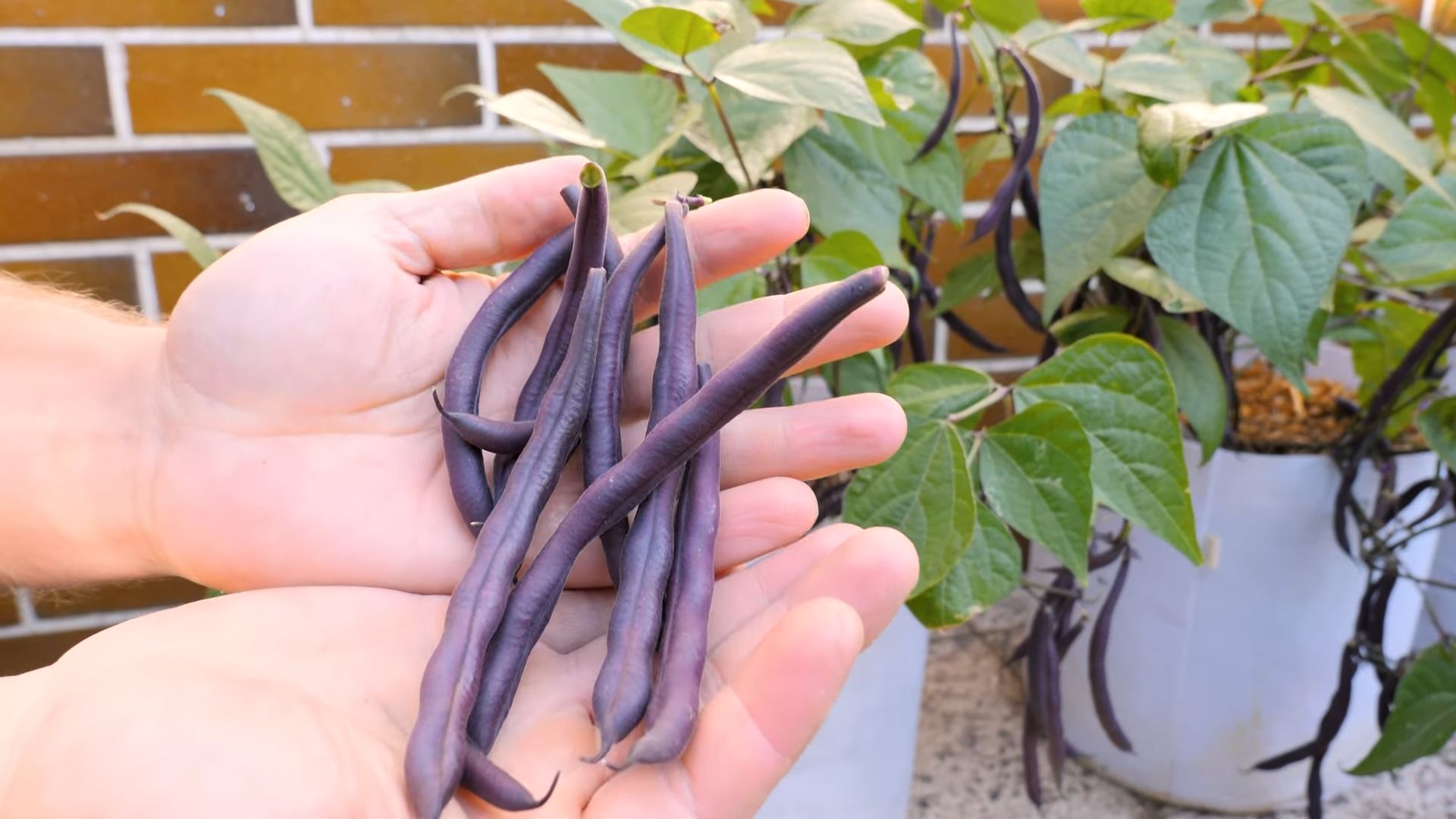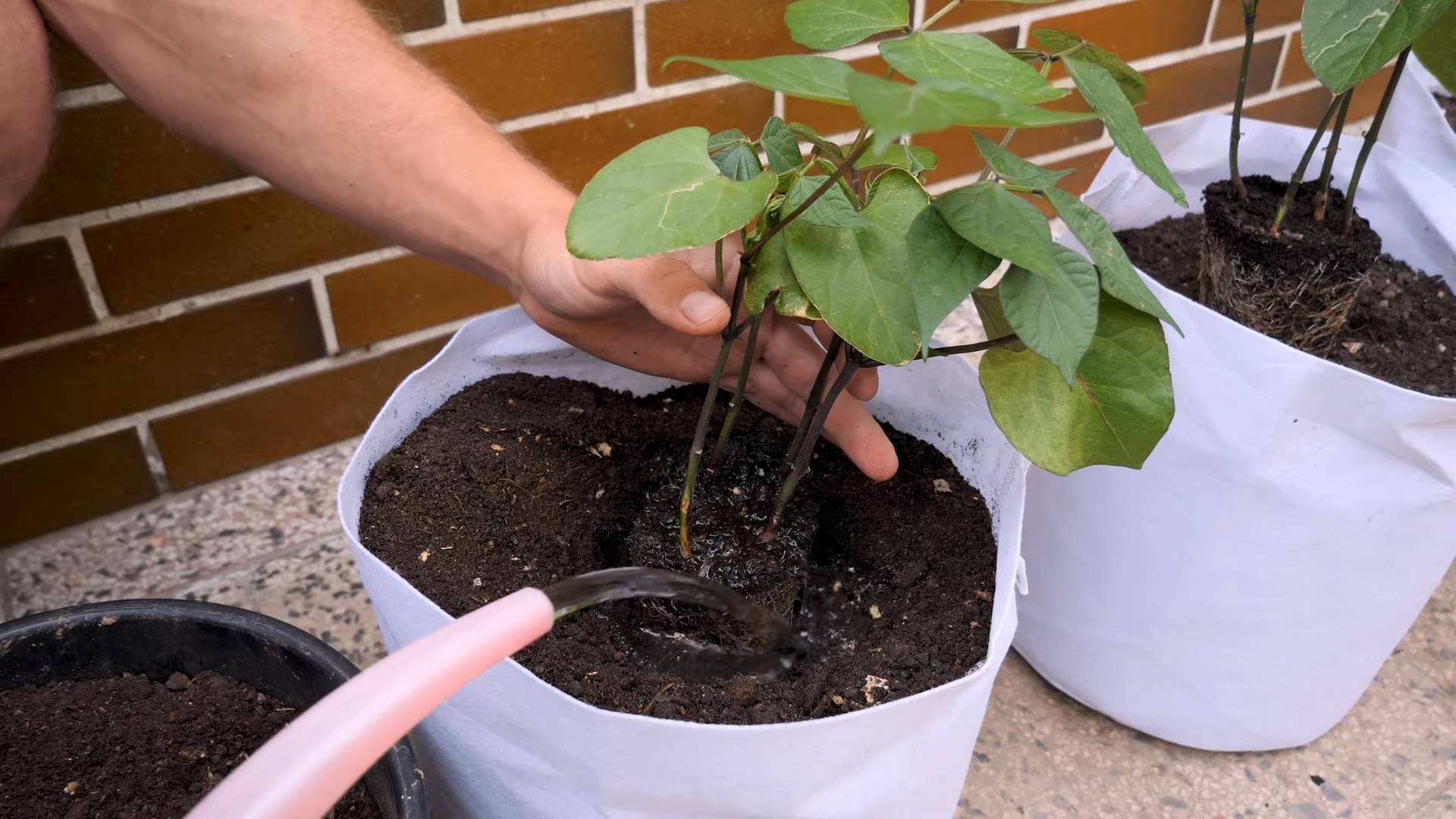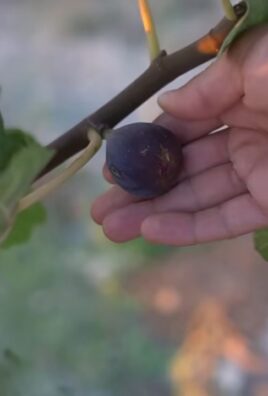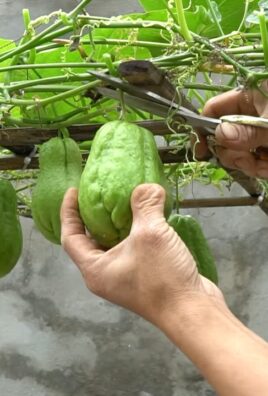Purple Bush Bean Container Gardening: Your Guide to a Bountiful Harvest
Purple bush bean container gardening – it sounds exotic, doesn’t it? But trust me, growing these vibrant, delicious beans in containers is easier than you think! This isn’t just about aesthetics; purple bush beans offer a unique flavor and beautiful color to your dishes. I’ve always loved the satisfaction of growing my own food, and container gardening has opened up a whole new world of possibilities, especially in smaller spaces. This article is your complete guide to mastering the art of Purple Bush Bean Container Gardening, packed with simple DIY tricks and hacks to ensure a bumper crop.
Historically, beans have been a staple crop across numerous cultures, providing essential protein and nutrients for centuries. From ancient civilizations to modern-day kitchens, beans have held a significant place in our diets and traditions. But what if you don’t have a sprawling garden? That’s where the magic of container gardening comes in. Container gardening allows you to enjoy the rewards of homegrown produce, even if you only have a balcony, patio, or even a sunny windowsill.
Why bother with Purple Bush Bean Container Gardening? Because it’s incredibly rewarding! Imagine the pride of harvesting your own fresh, vibrant purple beans, knowing exactly where they came from and how they were grown. It’s a fantastic way to connect with nature, teach children about the food cycle, and, of course, enjoy delicious, healthy meals. This article will walk you through everything from choosing the right container and soil to dealing with common pests and harvesting your delicious bounty. Let’s get started on your journey to successful purple bush bean container gardening!

Growing Purple Bush Beans in Containers: A Step-by-Step Guide
I love the vibrant color and delicious taste of purple bush beans, and container gardening makes growing them so accessible, even if you have limited space. This guide will walk you through everything you need to know to successfully grow your own purple bean bounty!
Choosing Your Container and Location
- Container Size: Purple bush beans don’t need massive containers, but they do need enough room for their roots to spread. Aim for at least 12 inches in diameter and 12 inches deep. Larger is always better, allowing for more beans and less frequent watering. I prefer using plastic containers as they retain moisture better than terracotta.
- Drainage: Excellent drainage is crucial. Make sure your container has drainage holes at the bottom to prevent root rot. If your container doesn’t have holes, drill some yourself. This is super important!
- Material: While plastic is my go-to, you can use other materials like wood or metal, but be mindful of how quickly they dry out. Wood containers might need more frequent watering.
- Sunlight: Purple bush beans need at least six hours of direct sunlight per day. Choose a sunny spot on your patio, balcony, or deck. Observe your garden throughout the day to find the sunniest location.
Preparing Your Container and Soil
- Clean your container: Before you start, thoroughly clean your container with soap and water to remove any dirt, debris, or potential pests from previous plantings. Let it dry completely.
- Choose your soil: Use a high-quality potting mix specifically designed for vegetables. Avoid using garden soil directly from your yard, as it can be too heavy and compact for container gardening. Look for a mix that’s well-draining and rich in organic matter.
- Fill the container: Fill your container with the potting mix, leaving about an inch of space from the top. This allows for easy watering and prevents overflow.
- Lightly moisten the soil: Gently water the soil until it’s evenly moist but not soggy. This helps the seeds settle in nicely.
Planting Your Purple Bush Bean Seeds
- Seed Depth: Plant your purple bush bean seeds about 1 inch deep and 2-3 inches apart. If you’re planting multiple seeds in one container, space them accordingly to give each plant enough room to grow.
- Spacing: For larger containers, you can plant multiple rows of beans. Remember, proper spacing is key to healthy growth and abundant harvests.
- Cover the seeds: Gently cover the seeds with soil, ensuring they are completely buried. Don’t press down too hard, as this can damage the delicate seeds.
- Water gently: After planting, water the soil gently to settle the seeds and ensure good soil contact. Avoid overwatering at this stage.
Caring for Your Purple Bush Beans
- Watering: Water regularly, keeping the soil consistently moist but not waterlogged. Check the soil moisture daily, especially during hot and dry weather. The top inch of soil should feel slightly dry before watering again. Overwatering can lead to root rot, while underwatering will stunt growth.
- Fertilizing: Purple bush beans are relatively low-maintenance, but a balanced liquid fertilizer applied every two weeks will boost their growth and yield. Follow the instructions on the fertilizer packaging for the correct dilution rate.
- Pest and Disease Control: Regularly inspect your plants for pests like aphids or bean beetles. If you notice any infestations, treat them promptly with an appropriate insecticide or organic pest control method. Good air circulation can help prevent fungal diseases.
- Support (Optional): While purple bush beans are generally compact, you might consider providing some support, especially if you have a particularly vigorous variety or if your container is tall and narrow. A simple stake or trellis can help prevent the plants from becoming too sprawling.
- Weeding: Remove any weeds that may compete with your bean plants for nutrients and water. Regular weeding will also improve air circulation around the plants.
Harvesting Your Purple Bush Beans
- Harvest Time: Purple bush beans are typically ready for harvest 50-60 days after planting. The pods should be plump and firm, and the color should be a deep purple.
- Harvesting Technique: Harvest the beans by snapping them off the plant at the stem. Harvesting regularly encourages the plant to produce more beans. Don’t wait too long to harvest, as overripe beans will become tough and stringy.
- Storage: Store your freshly harvested purple bush beans in the refrigerator in a plastic bag. They will stay fresh for several days.
Troubleshooting Common Problems
Yellowing Leaves:
Yellowing leaves can indicate several issues, including underwatering, overwatering, nutrient deficiencies, or pest infestations. Check your watering schedule, soil moisture, and inspect the plants for pests. If necessary, apply a balanced fertilizer.
Poor Growth:
Slow growth can be due to insufficient sunlight, poor soil quality, or lack of nutrients. Ensure your container is in a sunny location, use a high-quality potting mix, and fertilize regularly.
Root Rot:
Root rot is a serious problem caused by overwatering and poor drainage. Ensure your container has adequate drainage holes and avoid overwatering. If root rot is suspected, it’s best to start over with new plants and fresh soil.
Remember to always check your plants regularly for any signs of problems and address them promptly. Happy gardening!

Conclusion
So there you have it – your comprehensive guide to achieving bountiful harvests of purple bush beans using container gardening! This DIY trick isn’t just about growing your own food; it’s about experiencing the immense satisfaction of nurturing life from seed to plate. The convenience of container gardening, coupled with the vibrant beauty and delicious taste of purple bush beans, makes this a truly rewarding endeavor. This method allows you to maximize space, control growing conditions, and enjoy fresh, homegrown beans even if you have limited outdoor space. It’s a perfect project for apartment dwellers, balcony gardeners, or anyone looking to add a touch of vibrant green to their surroundings.
The beauty of this Purple Bush Bean Container Gardening technique lies in its adaptability. Feel free to experiment with different container sizes and materials. Larger containers will naturally support more robust plants and larger harvests, while smaller ones are ideal for smaller spaces or for growing a smaller number of plants. Consider using self-watering containers to minimize watering frequency, especially during hot summer months. You can also explore companion planting; consider adding herbs like basil or marigolds to your containers to deter pests and enhance the overall health of your bean plants. These companion plants can also add a delightful aromatic dimension to your little garden.
Beyond the standard purple bush bean, you can easily adapt this method to other bean varieties. Experiment with different colors and types – from yellow wax beans to green beans – to diversify your harvest and enjoy a wider range of flavors and textures. Remember to select bean varieties suitable for container gardening; dwarf or bush varieties are generally preferred due to their compact growth habit. Don’t be afraid to try different soil mixes as well; a well-draining potting mix enriched with compost will provide the ideal environment for healthy bean growth. The key is to observe your plants, adjust your techniques as needed, and enjoy the process of nurturing your own little bean patch.
We strongly encourage you to try this Purple Bush Bean Container Gardening method. It’s a fantastic way to connect with nature, learn about plant growth, and enjoy the freshest, most flavorful beans you’ve ever tasted. Share your experiences with us! Post pictures of your thriving bean plants on social media using the hashtag #PurpleBushBeanContainerGardening. We’d love to see your successes and learn from your experiences. Let’s create a vibrant community of container gardeners, sharing tips, tricks, and the joy of homegrown goodness. Remember, even a small container can yield a big reward – both in terms of delicious beans and the immense satisfaction of growing your own food.
Frequently Asked Questions
What type of container is best for growing purple bush beans?
While almost any container will work, choose one that’s at least 12 inches deep and wide to allow for adequate root development. Containers made of plastic, wood, or even repurposed buckets are all suitable options. Ensure the container has drainage holes to prevent waterlogging, which can harm the bean plants.
What kind of soil should I use?
Use a well-draining potting mix specifically designed for containers. Avoid using garden soil directly from your yard, as it can be too heavy and compact for container gardening. Enriching your potting mix with compost will provide essential nutrients and improve soil structure. A balanced blend of peat moss, perlite, and compost is an excellent choice.
How often should I water my purple bush beans?
Water your bean plants regularly, keeping the soil consistently moist but not soggy. The frequency of watering will depend on factors such as weather conditions, container size, and soil type. Check the soil moisture level regularly by sticking your finger a couple of inches into the soil. Water thoroughly when the top inch or two feels dry.
How much sunlight do purple bush beans need?
Purple bush beans need at least six to eight hours of direct sunlight per day to thrive. Choose a location in your garden or on your balcony that receives ample sunlight. If you have limited sunlight, consider using grow lights to supplement natural sunlight, especially during the early stages of growth.
When can I harvest my purple bush beans?
You can typically harvest purple bush beans when the pods are plump and firm, but still relatively young and tender. Harvesting regularly encourages continued production. The best time to harvest is usually in the morning after the dew has dried.
What are some common problems I might encounter, and how can I address them?
Common problems include pests (aphids, bean beetles) and diseases (anthracnose, bean rust). Regularly inspect your plants for signs of pests or diseases. Use organic pest control methods such as insecticidal soap or neem oil to address pest infestations. Ensure good air circulation to prevent fungal diseases. Proper watering and soil drainage are crucial in preventing many common problems.
Can I save seeds from my purple bush beans for next year?
Yes, you can save seeds from your purple bush beans for planting next year. Allow some pods to mature fully on the plant until they turn dry and brown. Then, carefully remove the seeds from the pods and allow them to dry completely before storing them in a cool, dry place in an airtight container.
What if my purple bush beans aren’t producing many beans?
Several factors can affect bean production. Insufficient sunlight, improper watering, nutrient deficiencies, or pest infestations can all reduce yields. Review your gardening practices, ensure your plants are receiving adequate sunlight and water, and check for any signs of pests or diseases. Consider adding a balanced fertilizer to provide essential nutrients.




Leave a Comment